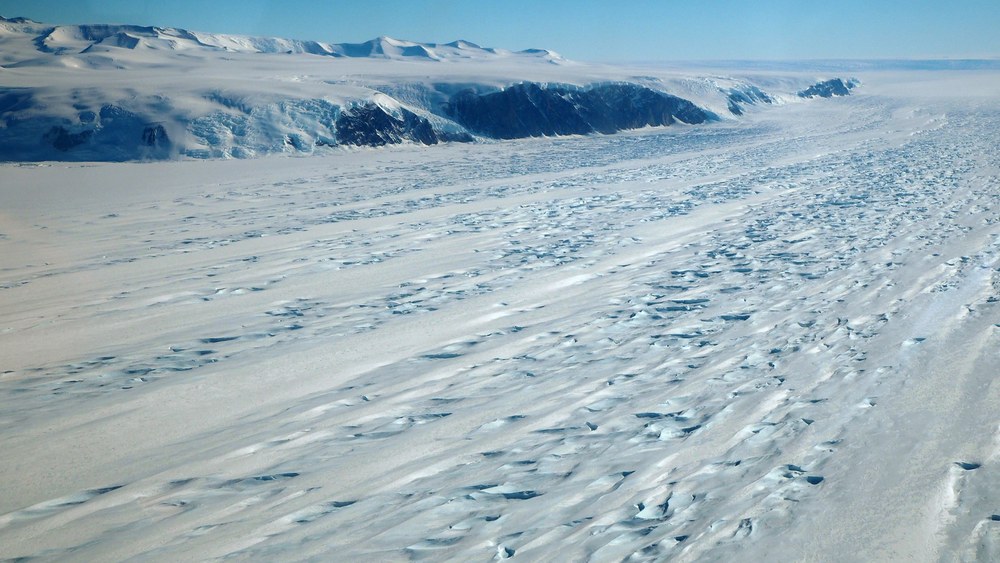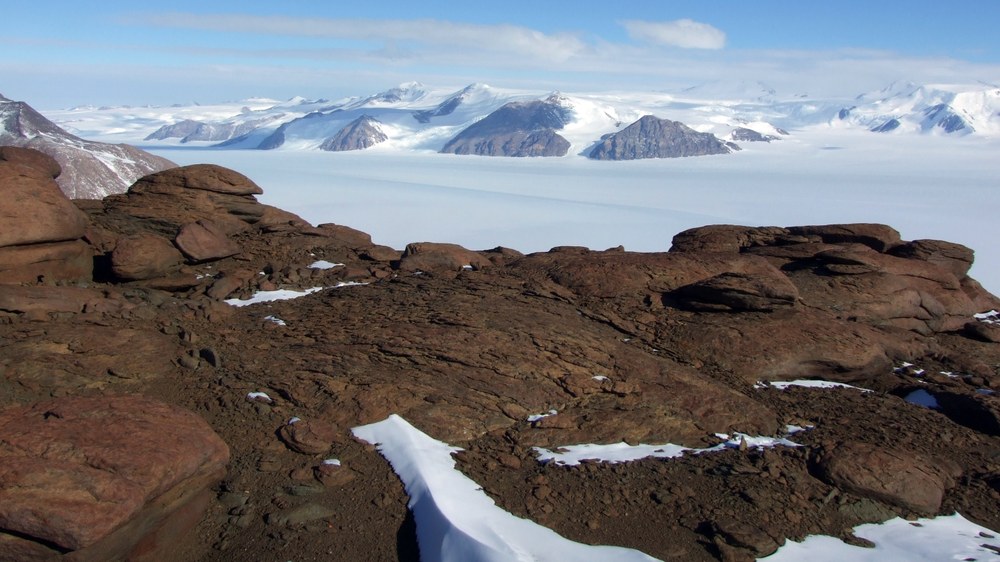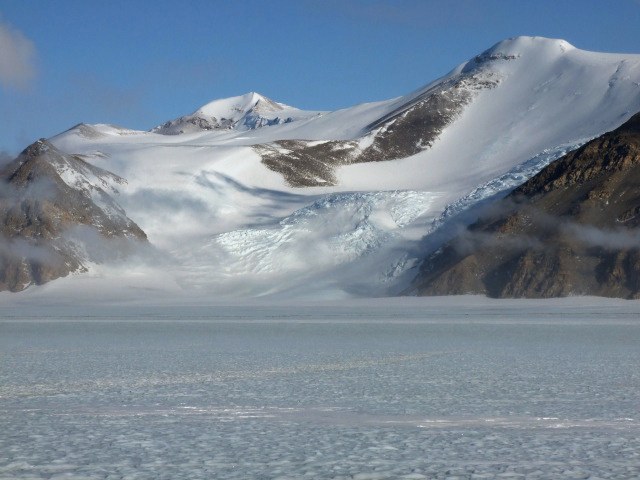The TIDEx Campaign on Darwin Glacier: Part 5 – On Darwin
November 5-28, 2016
Since November 5th, we are on Darwin Glacier. As I already said, this is a WiFi-free zone. Communication with Scott Base occurs via VHF radio and satellite phone. We transmit short text messages which summarize our stay on the glacier. Therefore, current photos are missing in my blog until we finish our work here on the glacier on November 27th. As soon as we return to Scott Base, I’ll update the blog with photos from our field work. Then the reader gets a visual impression of our life in ice and snow.
Nevertheless, in the next three weeks while we are at Darwin, every now and then a photo may appear. My team partner Christian Wild has also a blog, where he uses occasional photos from past expeditions. I’m allowed pinching one or the other. Later they will be replaced by my “live” photos from the TIDEx campaign.
Briefly, what are our science goals at the glacier: The behaviour of Antarctica‘s glaciers and their extensions onto the sea, the ice shelfs, is variable. Some are relatiely stable, others seem to lose considerably ice in a warming environment with glaciers flowing significantly faster than in the past. At the grounding zone, the transition from glaciers to ice shelfs occurs. Our field measurements, right at this location, help us to get detailed insights into how glacier and ice shelf interact. For me this is a bonus for my main scientific interest, the interpretation of remote sensing satellite data acquired over these areas.
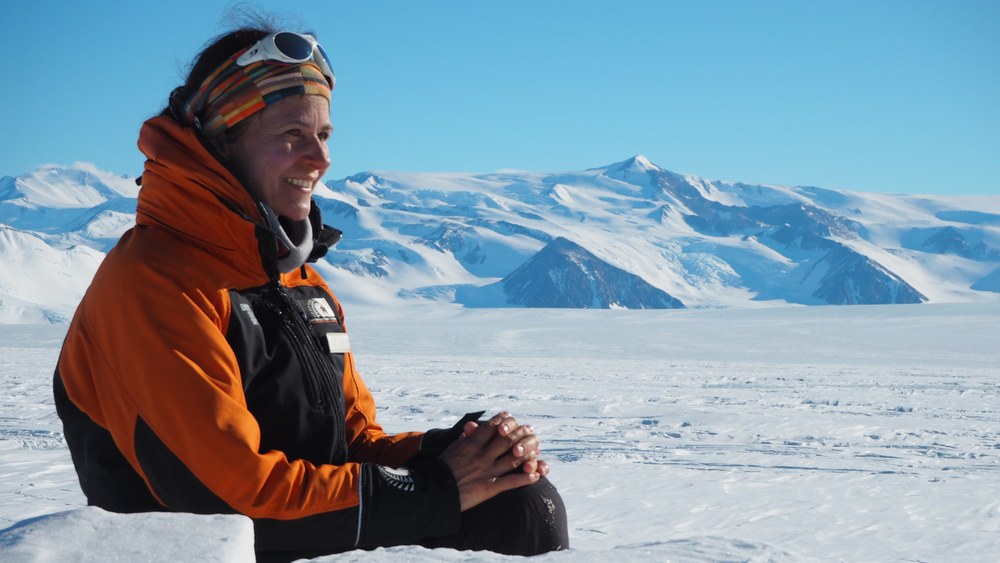
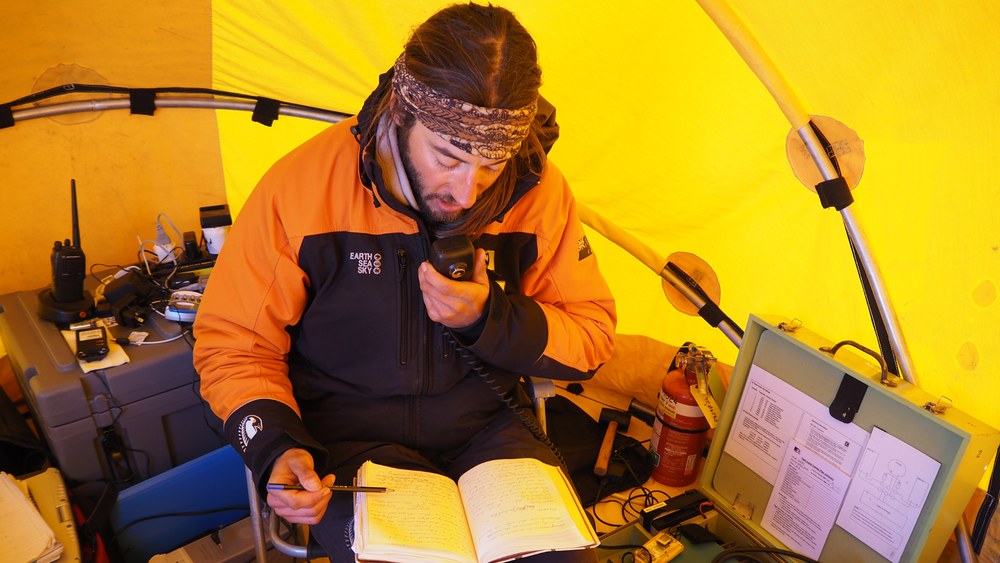
November 28, 2016
Rest Day
Our Twin Otter flight back to Scott Base was cancelled in the early morning.
Since the science part is done we enjoyed a sleep in until lunchtime. As the sun came out from behind the clouds it became quite toasty in our tent.
We are sleeping on 3 mats with a sheepskin rug on top, also we have four ‘nested’ sleeping bags; a cotton outer bag to protect from snow, a synthetic sleeping bag with a down sleeping bag inside it to keep us warm and a fleece liner to protect against smelly scientists. We are using our jackets as pillows which hide the block of chocolate underneath.
It takes about half an hour every morning to wiggle out of the sleep kit and into the polar clothing. Better not leave your boots outside otherwise they might be frozen and filled with snow.
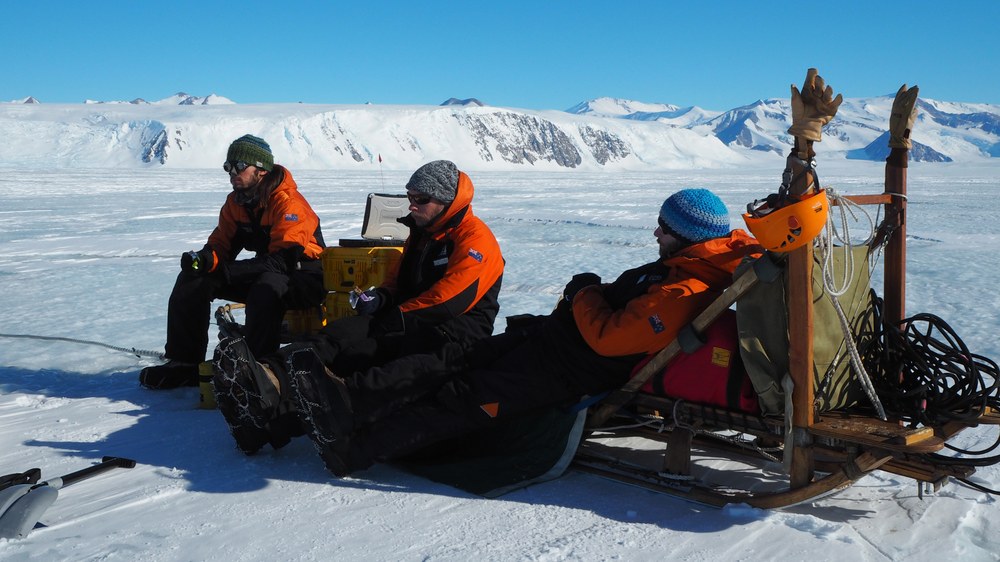

November 27, 2016
The moment of truth
We left our instruments set up to the last moment on the glacier to record as long as possible. After 13hrs on collecting the 10 field stations we are now back at camp.
Tonight we can finally find out if the highly sensitive instrumentation could resist the harsh Antarctic conditions and capture the processes within the grounding zone.
It all comes down to this very moment which decides the success of our campaign. With cold fingers we did enter on the computer and after a couple of seconds which felt like ages our tired eyes sees the first promising results, but celebration has to wait till we are back at Scott Base.
Now we have to prepare for your departure from here tomorrow morning.
November 26, 2016
Zero Impact
Antarctica embodies the last pure wilderness on earth.
Since the early polar explorer, it has been the stage of many endeavours and a place where heroes were born. But Antarctica is also a pristine and sensitive environment full of native beauty. It is home to plants and animals and simple life forms have even been discovered at high latitude.
Human presence however can directly disturb the ecological balance. So we have an obligation to minimise our impact on the environment. For us this means separating rubbish strains, collecting grey water and shipping human waste back to Scott base for further treatment.
We also reduce our fuel consumption where possible and try not to throw away any left-over food. Here at the Darwin glacier we leave only foot prints and take only pictures back to New Zealand.
Quick fact we have collected over 160l of pee so far!
November 25, 2016
Radar Marathon 2
Today we started re-measuring ice thickness at the locations we have already surveyed. We are looking for changes because of the melting from the bottom of the glacier.
While melting sometimes occurs at the surface, floating Antarctic glaciers mostly melt at their base due to warm ocean water.
Not much is known about the basal melt rate because it is difficult to measure from the surface. We don’t expect high basal melt rate so far out and away from the open ocean but our state of the art instruments can detect even the smallest changes over a short time period.
Perhaps our expectations will be wrong?
Quick fact; in parts of Western Antarctica, basal melt rate can be over 20m per year.
Wow!
November 24, 2016
Sea Level rise
Behaviour of the Antarctica ice sheet allows us to better estimate rate of sea level rise.
Current global sea levels rising 3-4mm annually, this is set to increase by the end of the century.
This increases the likelihood of flooding in coastal areas, with 65% of New Zealanders within 5km from the coast changes in Antarctica directly affect where we build our houses and plan our cities. Developing countries are also seeing migration and destruction of coastal communities.
Our work understanding part of the Antarctica ice sheet in remote melting polar ice causes changes all around the planet.
November 23, 2016
Gaining Elevation
Today we were working up stream of the grounding line.
From here we could overlook the Darwin Glacier and enjoy the view of this remote part of our planet. This spectacular scenery reminded us about the privilege of conducting research in Antarctica.
A blue sky and mild temperatures are a big contrast to the blizzard we had when we arrived.
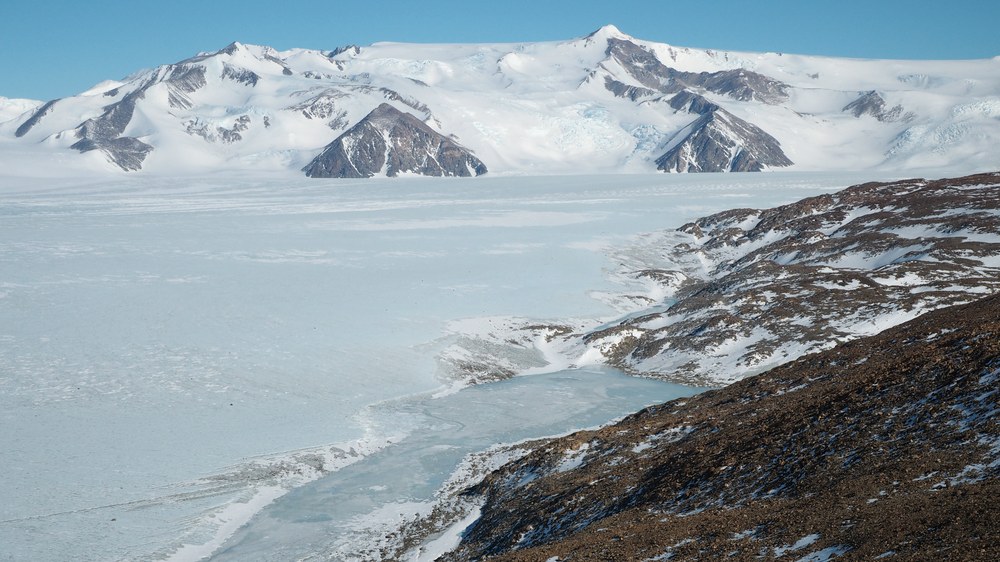
November 22, 2016
Ice-dream
This is our fourth week in Antarctica and we start to make certain things.
Olli dreams about sitting on the green grass under a willow tree and misses a lamb chop (with mint sauce). Dana is looking forward to the skiing season in the European Alps after riding on the sledge for many kilometres on the bumpy Darwin glacier. Ekki would enjoy seeing the sun actually set.
Since there is no wildlife so far south, I miss my little parrot Kia, who wakes me up early morning’s with her tweet.
November 21, 2016
It’s getting hot out here
Within the last two weeks temperatures have been around -10 to -15C during the daytime. Although we experience 24hrs of daylight each day we even have to wear sun cream at night.
By the summer solstice, on the 21st December, everywhere south of the Antarctic Circle (66 degrees South), the sun will shine for an entire day.
In some places all this solar radiation can melt the ice on the surface. This leads to turquoise blue melt water ponds and large melt water channels; luckily, as it is early summer, the lake and rivers on the Darwin Glacier are still frozen and we can travel across them.
We already see the first sign of surface melting so we need to get our research done before it gets too hot out here!
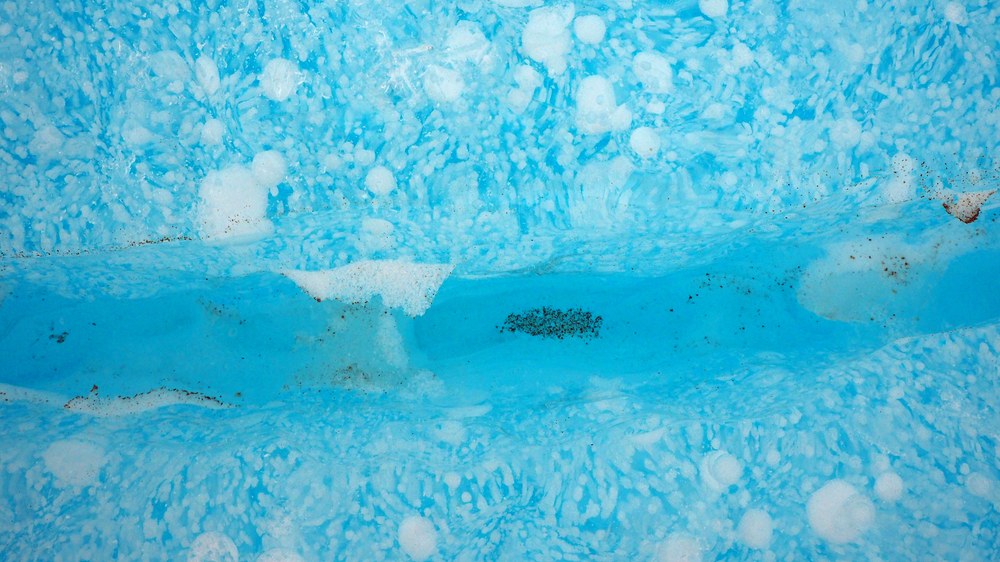
November 20, 2016
Ice Rocks
While driving around with our skidoos we came across a line of boulders today.
The Darwin glacier looked like a giant frozen river. Similar to liquid water in rivers; glacier ice is flowing down the slope driven by its own weight. Where 2 glaciers converge they mark the beginning of a line of boulders laying on the surface.
We can track these features over time to estimate the velocity of the glacier.
As the ice continues to flow, towards the ocean, the boulders on the surface are buried in snow, out on the Ross Ice Shelf. If they reach the edge of the ice shelf they might be transported far away from Antarctica with an ice berg.
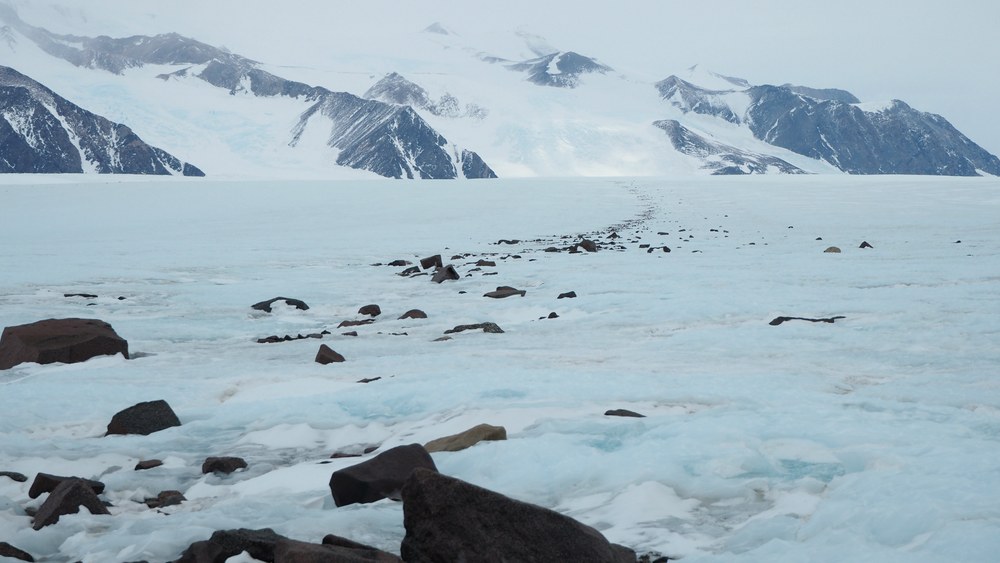
November 19, 2016
Spring tide
Its spring tide on the Darwin glacier and this marks the half way point of our stay on the ice.
Today the difference between low and high tide is 1.2m and the processes that we are interested in are most pronounced. While this is a very busy time for the installed field station we are filling gaps in our ice thickness maps.
When resting in our tents the constant ruffle of the blown snow is only interrupted by the creaking of the bending ice bellow.
Or maybe it’s just dinner time and I’m hungry!
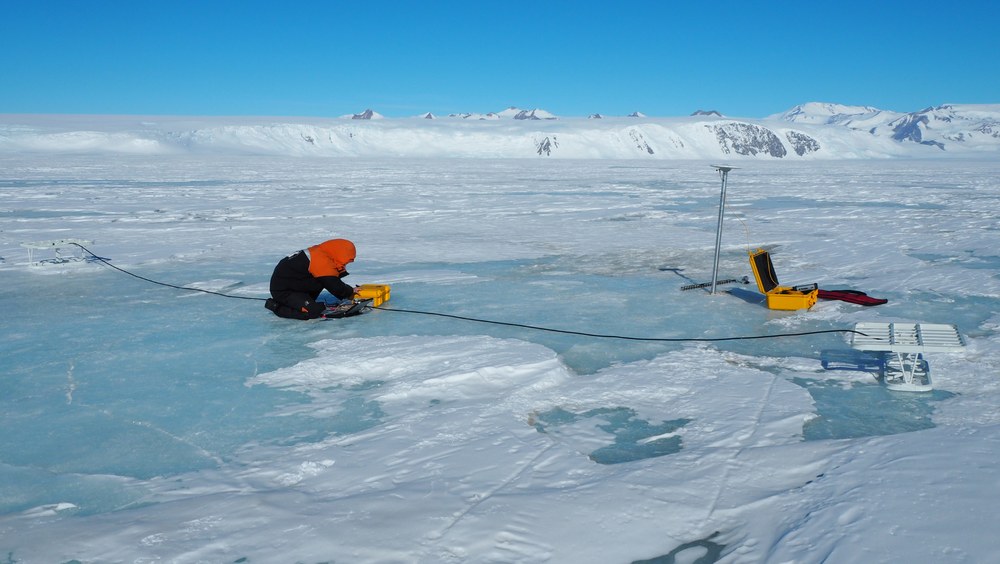
November 18, 2016
Why is the glacier blue?
Around our camp the surface of the glacier consists of bare ice.
Precipitation events are rare and strong glacial winds blow away every single snow flake out onto the ice shelf. Within the past week we have experienced wind velocity up to 45 knots reducing the temperature down to -20 degrees. This is not just cool its ice cold. Inhaling the air through your nose instantly freezes the moisture inside your nostrils.
This feeling of freshness lets us forget that we have been wearing the same clothes for nearly 2 weeks already. YUCK!
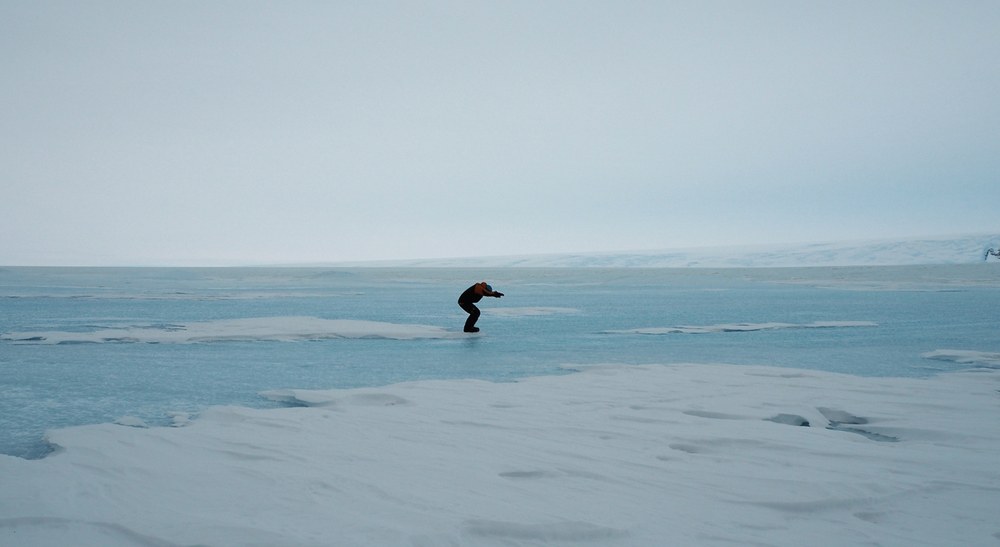
November 17, 2016
Radar Marathon
OPHEW, we just come back after the 2nd 12hr shift of ice thickness measurements. Why is this marathon really necessary?
The tip of an ice berg shows only 10% of its entire thickness. This means that an ice berg with 10m above the ocean has a 90m keel below the surface.
We can apply this principal to floating ice shelf and simply measure the surface elevation to invert it for ice shelf thickness. However close to the grounding line where we are the ice shelf is filled into by the Darwin Glacier. Here the ice is not freely floating and we cannot apply the ice berg principal.
Consequently we take our rustic wooden sledge for a drive and measure the ice thickness with radar. This takes a long time and the ice surface is very rough.
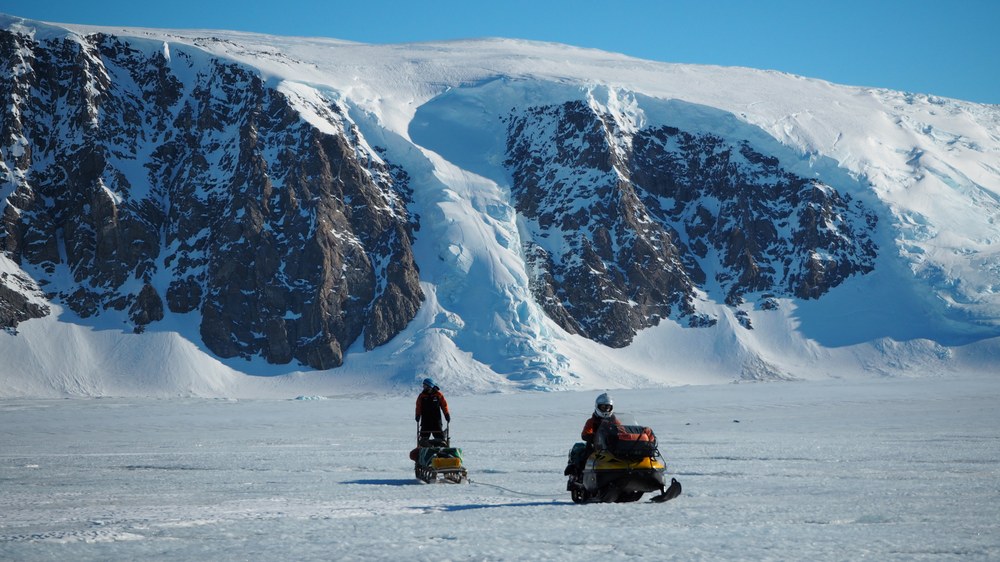
November 15, 2016
Good Food, Good Mood
The first person who gets up in the morning is making breakfast for the group.
A first good meal basically means you crush ice and snow with a shovel to melt it in a big pot. As the others wake up hot water for a nice cup of tea is ready.
For a healthy start to the day we eat bacon and hash browns or we warm up any left over from the day before. Crackers, cheese, salami and tuna make a good lunch while away from our camp.
We have dinner around 2200 which is usually stir-fry meat with frozen beans and rice. A block of chocolate is always in the pocket to help stay warm. If you don’t finish it during the day I recommend to put it within reach of your sleeping bag.
The Antarctic diet is great!
November 14, 2016
Bending Ice
The Darwin Glacier feeds into the much larger Ross Ice Shelf.
Over the transition between grounded and floating ice the position of the tide increases. Today we distributed seven highly sensitive tilt meters across the grounding zone to measure the flection due to the tide.
These movements are necessary to calibrate our space borne observations back at our offices. Our tilt meters can measure surface bending down to 1/1000, holy cow!
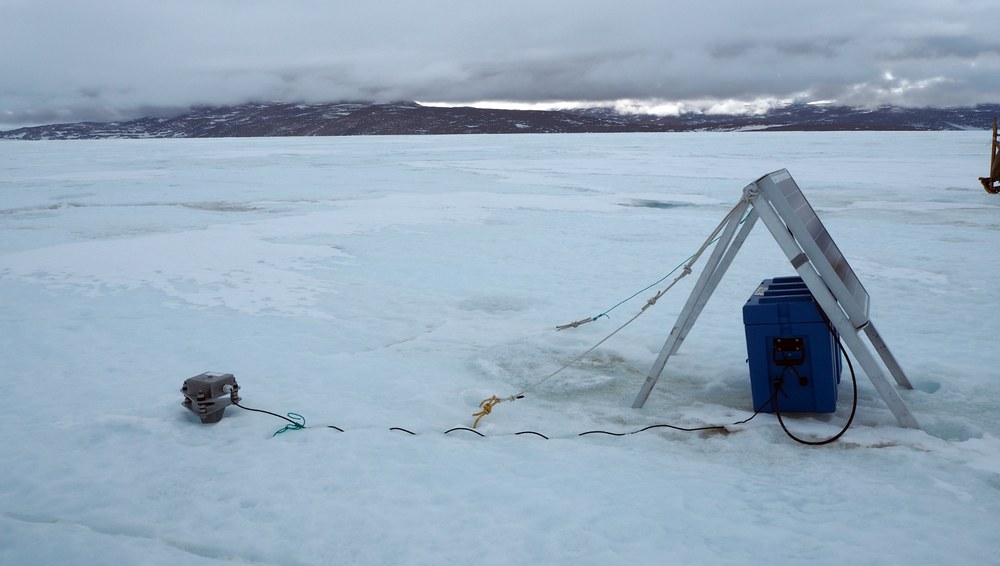
November 13, 2016
Low Side
Interaction of the sun the moon and our planet can’t hide.
In the Ross Sea the tidal cycle roughly repeats itself every 14 days. This constellation can be approximated using ocean tide models.
Yesterday we installed a GPS station in the floating part of the ice shelf to measure the tide and millimetres of fluorescein. This tide acuity is obtained by having a nearby GPS base station on rocks and if necessary to interpret our categorised data.
We want to observe a full neap spring neap tidal cycle* and today marks the start.
Added annotation:
* Nipp tides occur when sun, Earth and moon form a right triangle (crescent). Then high tides are lower and low tides are higher than usual. A spring tide happens when sun, Earth and moon are arranged along a line (full or new moon). Now the opposite occurs: High tides are higher and low tides are lower than normal.
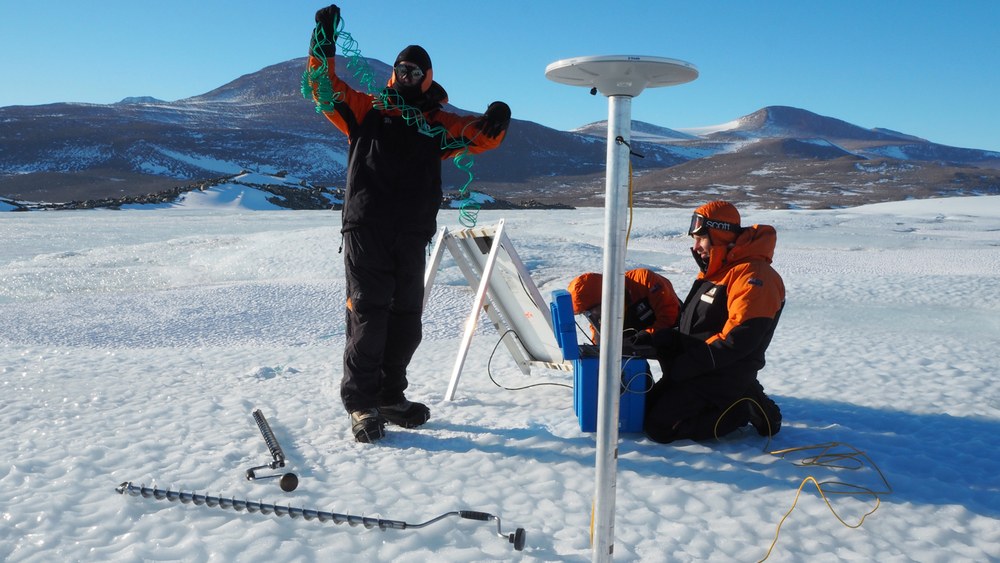
November 12, 2016
Back on Track
Sun is shining, the weather is sweet.
An early morning call from Scott Base notifies us that a squadron of twin otters will arrive in one hour. A few moments later we hear the growling of the plane on the horizon.
After they landed the pilot George and Alex used their bare strength and juggled all our cargo out onto the ice.
After feasting on hash browns we leave our camp for the first day of installing our field station.
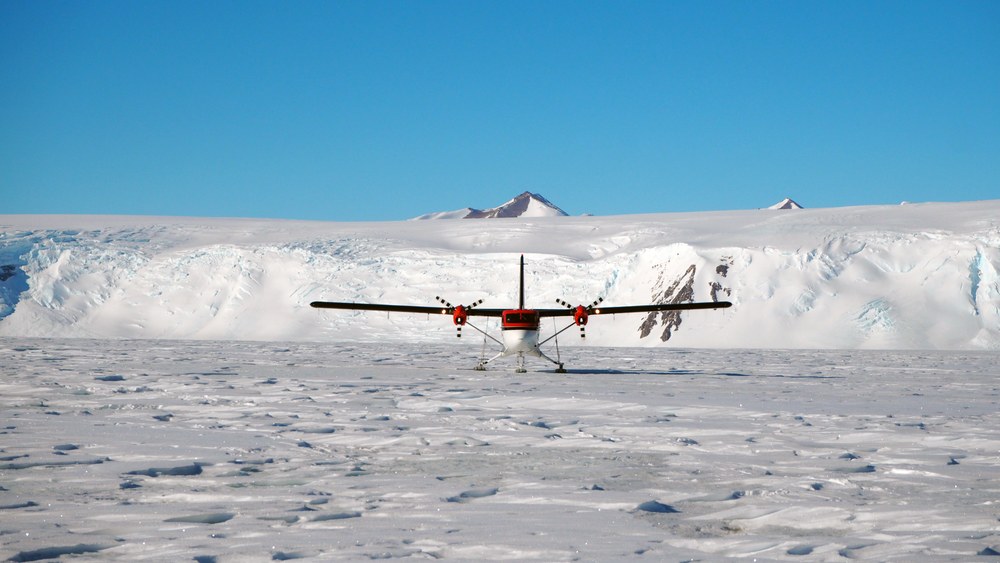
November 10, 2016
Cargo Embargo
Is the early polar explorer conducting Antarctic research or a huge logistical challenge?
For our three week expedition we have survival gear, 500kg of scientific equipment, 200kg of food, 3 skidoos, 1 sledge, and 600L of fuel. These come up to about 3 tonne of cargo which is transported by four individual twin otter flights from Scott Base to our field site at the Darwin Glacier.
A group effort of many people and Scott Base is needed to make this work. But cooperation of the weather is essential!
Currently strong winds prevent our gear from arriving and confine us to our campsite. Fingers crossed for tomorrow.
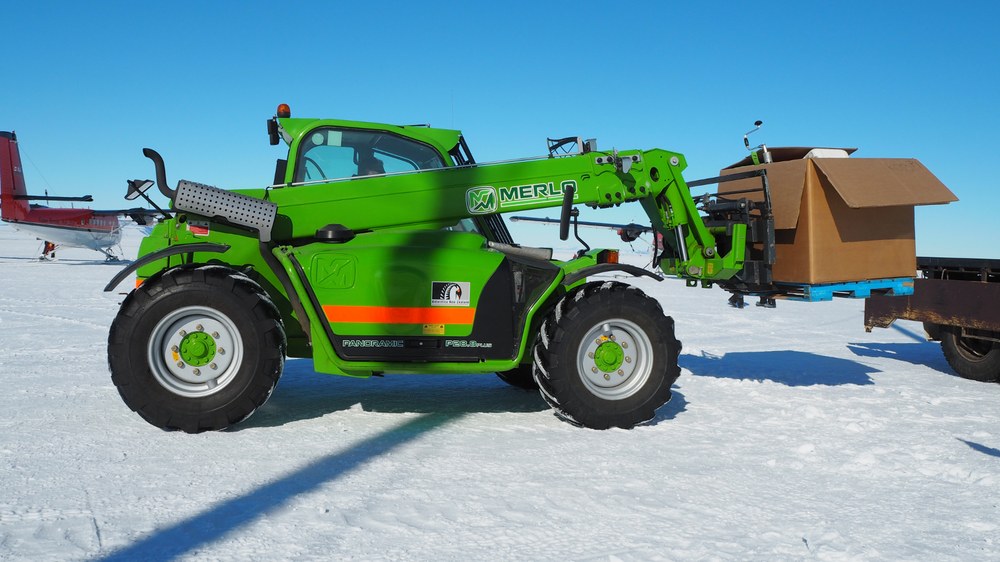
November 9, 2016
Sitting on Thin Ice?
In Antarctica we can find these different types of ice.
Sea ice consists of frozen ocean water only a couple of meters thick. Ice resting on land is created from the compaction of accumulated snow and can be up to 4km thick, however we are sitting on the Ross Ice Shelf this also floats on the ocean and is formed as land ice moves off the Transantarctic Mountains and detaches from the land.
Our base camp is located at 79° 52.50’ S 159° 45.08’ E. Today we measured the ice thickness at camp using a new radar system: 733m thick, we won’t get wet feet.
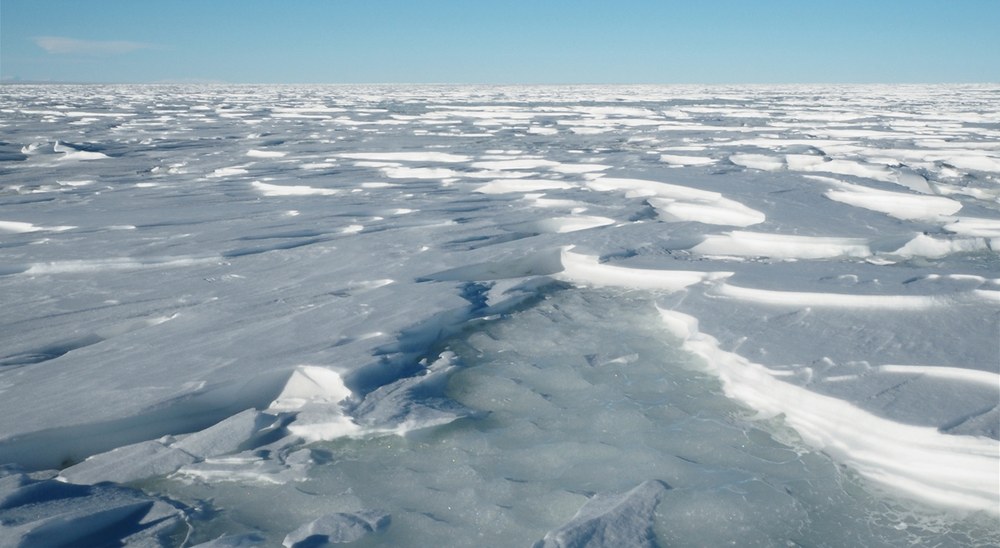
November 8, 2016
Icesolated
We spent the last two days in our little yellow tents. Katabatic winds* of 35 knots**, gusting to 45 knots**, caused snow to drift around our camp. The wind eroded the ‘Great Wall of Antarctica’ already!
We developed some creative recipes using the dehydrated rations and frozen canned food. The time out gave us a chance to read our books.
We are all jealous of Ekkis’ ability to sleep at any time of the day.
Added annotation:
* Katabatic winds are cold winds rushing down elevated slopes (“fall winds”). In polar regions they blow from the inland ice sheet, e.g. glaciers, shoreward.
** 35 knots correspond to 65 km/h, 45 knots almost 85 km/h.
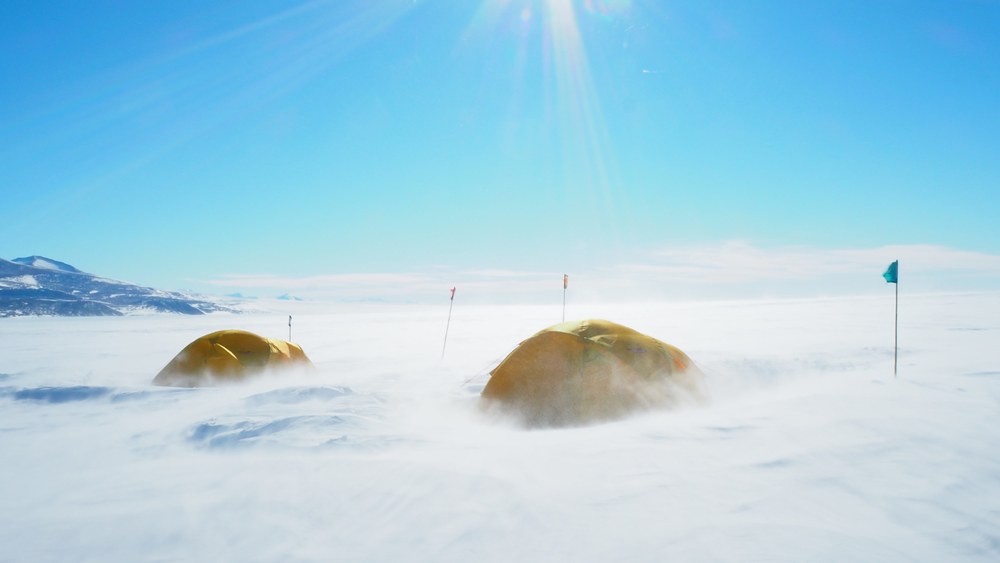
November 6, 2016
Great wall of Antarctica
Everybody is well and we had a good 1st night’s sleep. We woke up to a fresh breeze and a pleasant -12 degrees temperature.
We spend the day securing our base camp against the glacial winds.
The tents are anchored to the glacier and are protected by a high ice wall of blown snow. The wind weakened off as we finished building our frozen castle.
Our open air toilet looks like a throne with views over a kingdom of ice and snow.
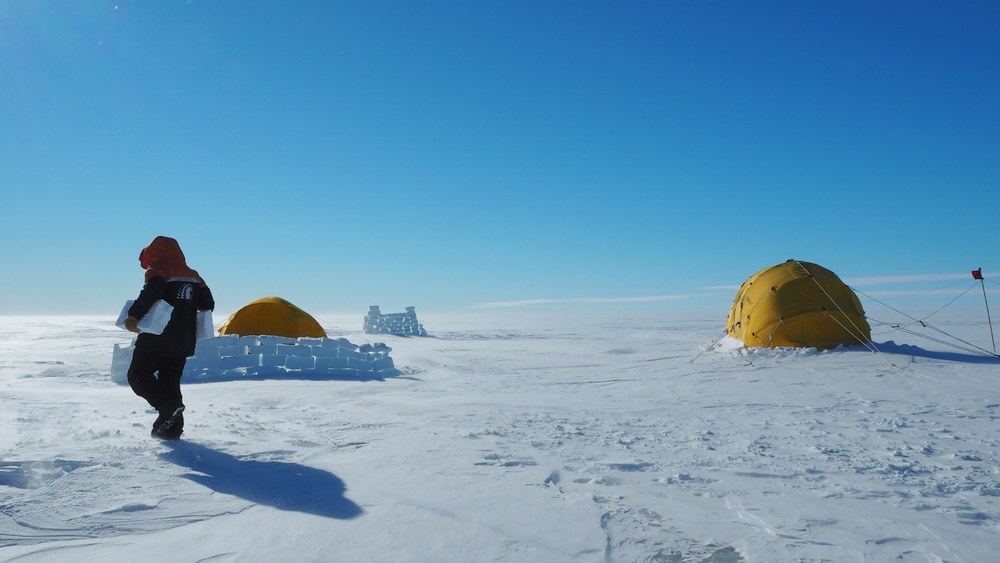
November 5, 2016
Sweet home Darwin Glacier
We were worrying whether flight would be delayed or not, at 1100 Olly got final call for departure at 1200.
1hr later we were sitting in the twin otter to the Darwin Glacier.
Our flight route across Black Island and slope of Mt Discovery then impressive Skelton and Mulock Glaciers.
Flight conditions were ideal except for unavoidable turbulence at the Outlet Glacier.
We safely landed on ice and established camp.
Looks like a good spot for tilt meters!!!
